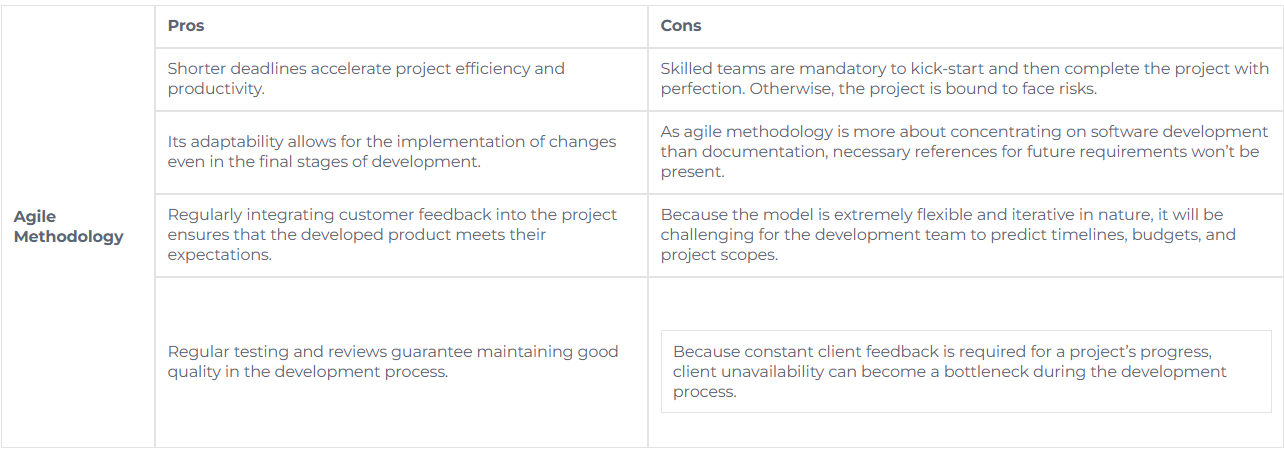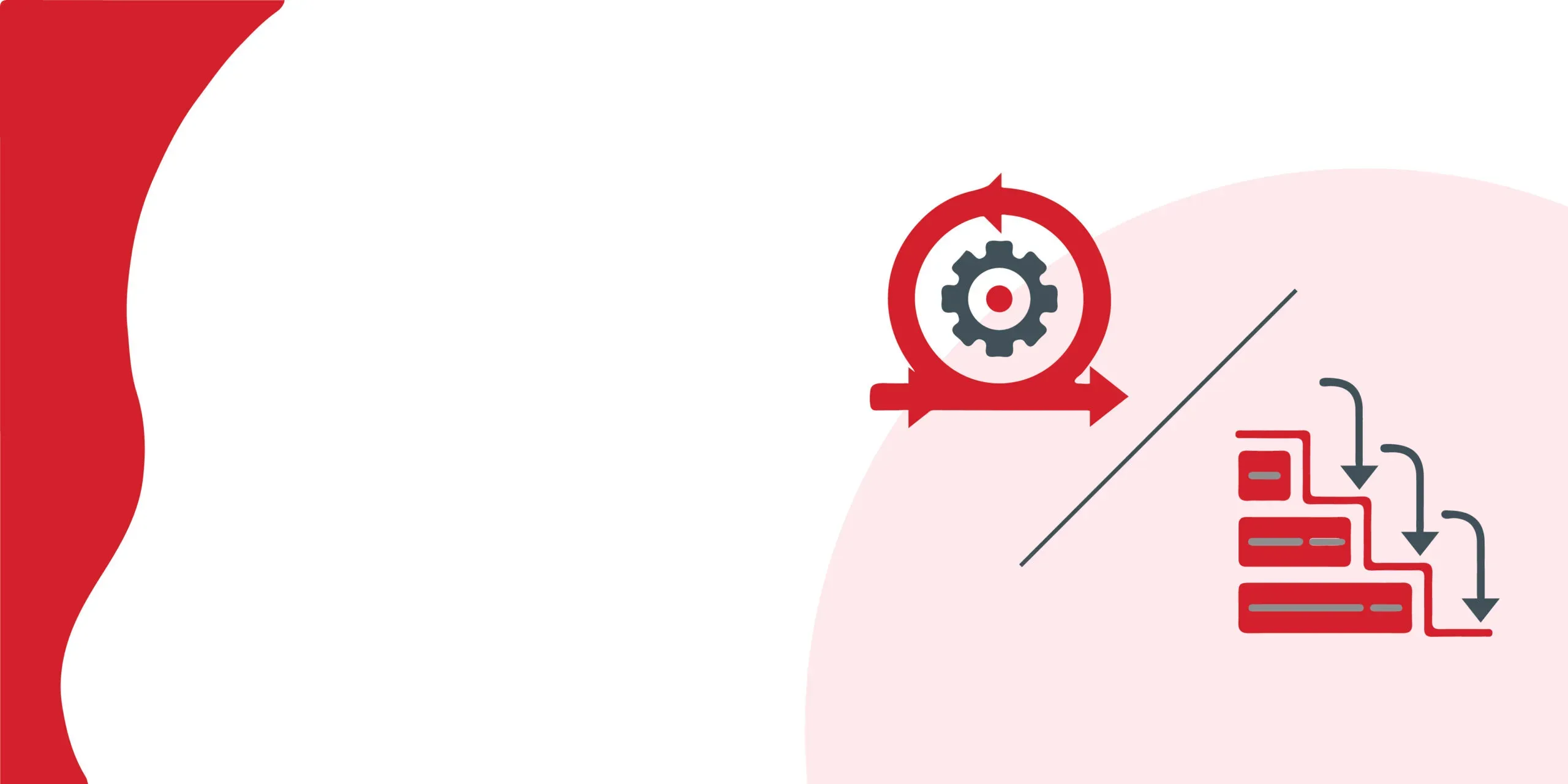Agile or waterfall? Which is the best software development methodology among these two? If this question stumps you, you’re either a novice developer struggling to decide between two strategies or a tech enthusiast. Either way, let us help you reach an informed decision after strolling through a comprehensive comparison.
The way a team approaches and handles a project can have a significant impact on how the product shapes up. Both waterfall and agile methodologies have been prominent in project development for a considerable amount of time, each offering significant advantages. The rules and strategies used by both methodologies are different. It is essential to know what makes both methodologies differ from each other and how to choose the best among both for a project.
What is the Agile Methodology in software development?
The software development sector introduced the agile methodology as a counterpart to the waterfall model. The waterfall model deals with a rigid structure when it comes to project development, whereas the agile model showcases a more fluid and flexible structure. The agile way of software development introduces a team-driven approach, allowing multiple members of a development team to actively contribute to the product. This was not a possibility worth considering in the waterfall model.
Stages of Agile Development
- Ideation: This is where it all starts. The scale and scope of the project are discussed at this stage, and all necessary requirements will be documented after having a word with the client. After understanding the purpose of the software that is to be developed, resource allocation is planned accordingly.
- Development: This is considered the longest phase of the project’s SDLC. After ideation, the first phase of the project’s development will begin. From the design and development to perfecting the UI and UX components, everything will be completed during this stage. Once the first version is ready, it’ll be moved to testing.
- Testing: The first iteration of the developed software will go through thorough internal testing to omit bugs, if any, before its release.
- Deployment: Once the product comes out bug-free after testing, it is released for the customers to access all the features. Constant monitoring of feedback is done to collect input for further revisions, if any.
- Maintenance: In agile development, deployment is never the final phase. Continuous support and maintenance are provided by the development team, which monitors the scope for improvement after going through feedback.
The agile model of custom software development was designed in such a way that changes can be made to a project in progress even in the late stages of development. For a software development company, a considerably scaled project might take even a year or more to reach completion. It is normal for industry and market to go through notable changes in this time period, and better technologies might be introduced. Alternatively, the technology currently being used in the project development process may become outdated. Hence, in such scenarios, agile development approaches are highly flexible to integrate any technologies midway through the process.
The evolutionary nature of the agile model was introduced by keeping the way players worked together to score in a rugby match as a reference. Often with short deadlines, the entire team will spearhead the project and march towards completion in a productive and efficient manner. Let us weigh the pros and cons of Agile methodology to get a better understanding of the model:

In short, agile methodology is best if the project requirements are meant to evolve throughout the process and rapid delivery is expected.
What is the waterfall model in software development?
Moving through the software development lifecycle in a linear and sequential manner is defined by the waterfall model in the software development sector. For decades, this methodology has acted as a cornerstone in the software development sector. Each phase of the project begins only after the completion of the previous one in this traditional, step-by-step software development model.
Stages of the Waterfall Model:
- Requirement gathering and analysis: After frequent and effective communications with the client, a detailed understanding of the project is acquired by the developers. This stage lays a solid foundation for the project’s development.
- Design: After a thorough analysis of the project, get a blueprint ready before development begins. Designing a structured layout aids in the project’s robust development on the go without allowing for deviations.
- Implementation: After completing the design, software developers begin programming to shape the necessary features for the software. The development process entails the integration of various modules and the accurate fulfilment of the design requirements.
- Integration and Testing: In this phase, the developed system is monitored to spot any issues or bugs and omit them. It is also checked to see if multiple components in the project are working seamlessly as expected.
- Deployment: The product is now ready for market release. The software is released to the production environment and deployed on users’ machines for real-time usage.
- Maintenance: As the final stage of the Software Development Life Cycle (SDLC), the custom software development company provides ongoing maintenance and support to guarantee the project’s competitive performance.
This methodology structures the project flow to mimic a waterfall, as the name implies. It moves in accordance with the logic of a project’s sequential progress. A project development cycle divides into multiple phases, making it impossible to make changes once a phase is complete.
Industrial projects often use the waterfall model, which is considered a first-development model. It is considered an effective software development approach to achieve organizational goals. Unlike other software development models, the waterfall model doesn’t incorporate client feedback throughout the process. The developers get in touch with the clients during the initial phase and then move directly through a robust development process.
Let us go through the pros and cons of the waterfall methodology:

For projects with well-defined requirements and when the development team is aware of the technology required to build the software, the waterfall model is recommended.
Which is the best for Software Development: agile or waterfall?
There is no one-line answer for this question. Instead, understanding your project requirements will direct you to the right methodology among these two.
If you are looking to develop a flexible project that requires constant feedback from the client and rapid iterations, the Agile model is your ideal choice. If your requirements are not completely known during the initial phase and will be explored on the go, Agile will best fit them.
If you already have well-defined requirements that are unlikely to change during the software development process, then the waterfall model is your go-to methodology. Some organizations will require thorough documentation of the development process and move through a well-structured, clear process. Waterfall can adhere to such strict development rules and provide good results if the software development company knows what they are doing!
Final Word
Organizations often struggle to choose between Agile and Waterfall, two popular software development models. The key to this confusion is to first understand how different these two methodologies are and then study your project requirements. Bringing these two pieces of data together will help you choose the best among them. Connect to Expeed Software if you are looking for an ideal software development solution. Our expert team is determined to understand your requirements and provide you with the best solution, powered by cutting-edge technologies.

